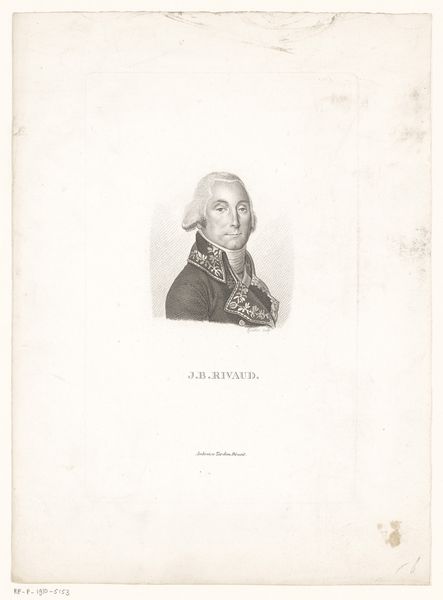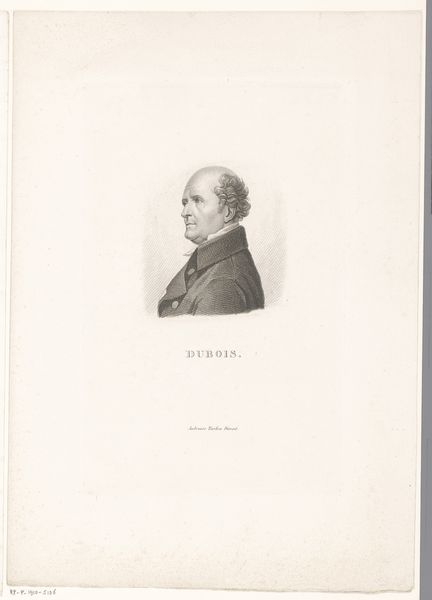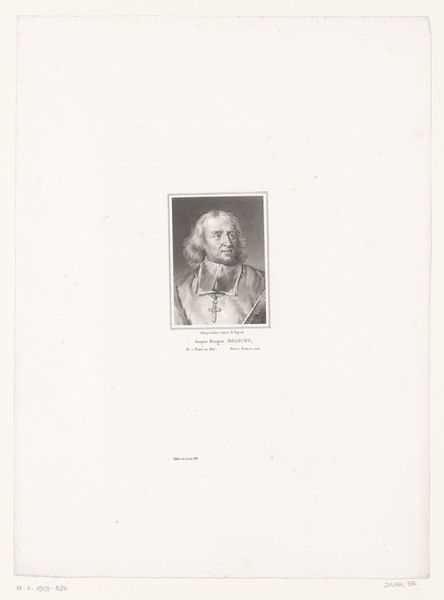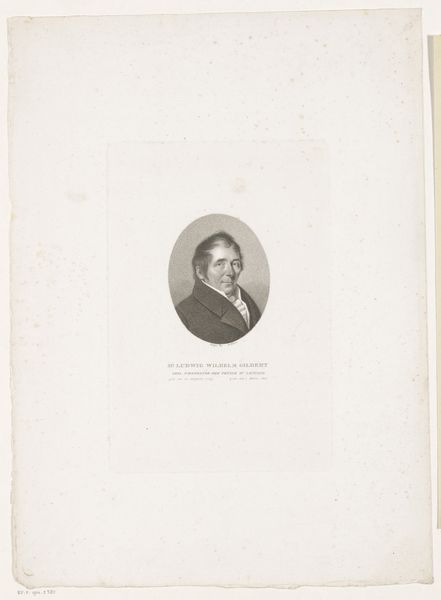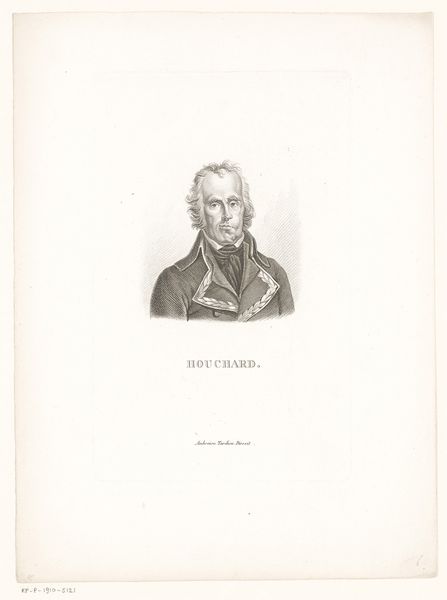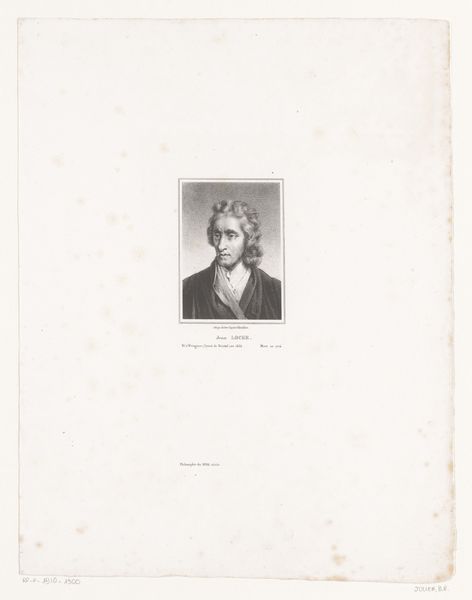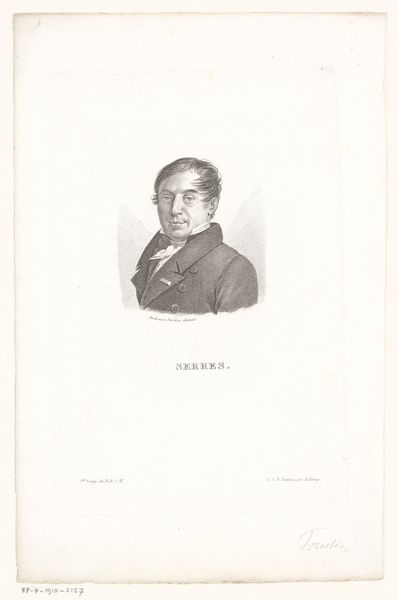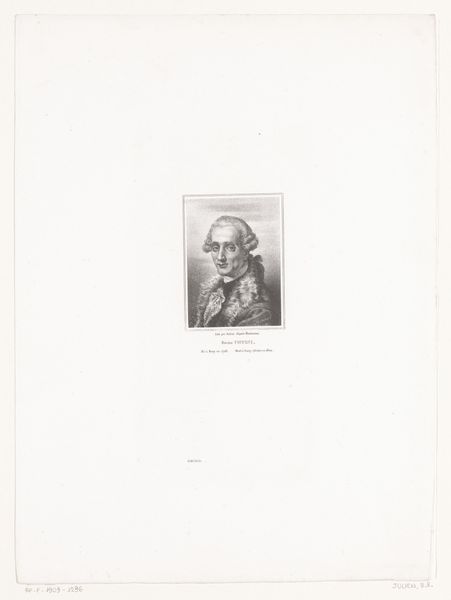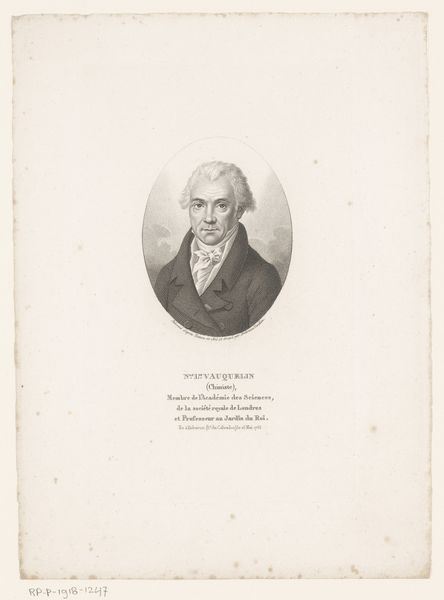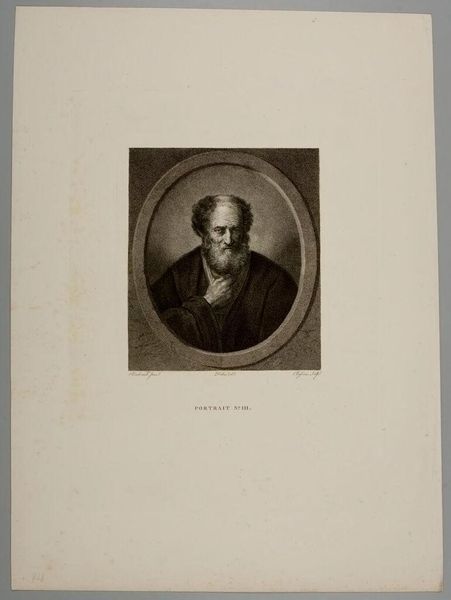
print, engraving
#
portrait
#
neoclacissism
# print
#
old engraving style
#
history-painting
#
engraving
#
realism
Dimensions: height 192 mm, width 123 mm
Copyright: Rijks Museum: Open Domain
Curator: This is a print made by Charles Aimé Forestier between 1818 and 1832. It's titled 'Portret van Nicolas Deyeux' and shows the man from the chest up. Editor: It feels so restrained, doesn’t it? Very clean lines, minimal shading. You can really see the process, almost feel the precision of the engraver’s tools. Curator: Yes, it certainly embodies a Neoclassical restraint. It reflects a wider cultural emphasis on rationality and order after the revolutionary period. Deyeux was a prominent chemist and pharmacist, playing an important role in public health. So, portraiture served the social function of commemorating figures of importance within the societal hierarchy. Editor: I am drawn to the repetitive mark-making to create tone and depth. Think of the labour involved in this! It feels radically different from our current methods of image production and dissemination. How did making and owning such images shape society at the time? Curator: Access was certainly more restricted than today. Prints like these circulated amongst an educated elite. They provided a shared visual language and reinforced social and intellectual networks. This particular print speaks to the prestige of scientific achievement in the early 19th century. Editor: Prestige defined by material and means. And beyond its cultural worth and dissemination... I wonder what dyes or tools the engraver employed. Knowing that is as valid a means to knowing the picture as anything! Curator: It does allow us to think about artistic practice, its role in representing social status and power and it speaks to shifting aesthetic values during a period of significant social change. Editor: Exactly. It pulls aside a corner of the curtain on the era and opens the room to different ways of thinking about production and impact. Curator: I agree, examining its historical context and material presence encourages a more multifaceted appreciation. Editor: Absolutely. I’ll be contemplating all those minute marks!
Comments
No comments
Be the first to comment and join the conversation on the ultimate creative platform.
